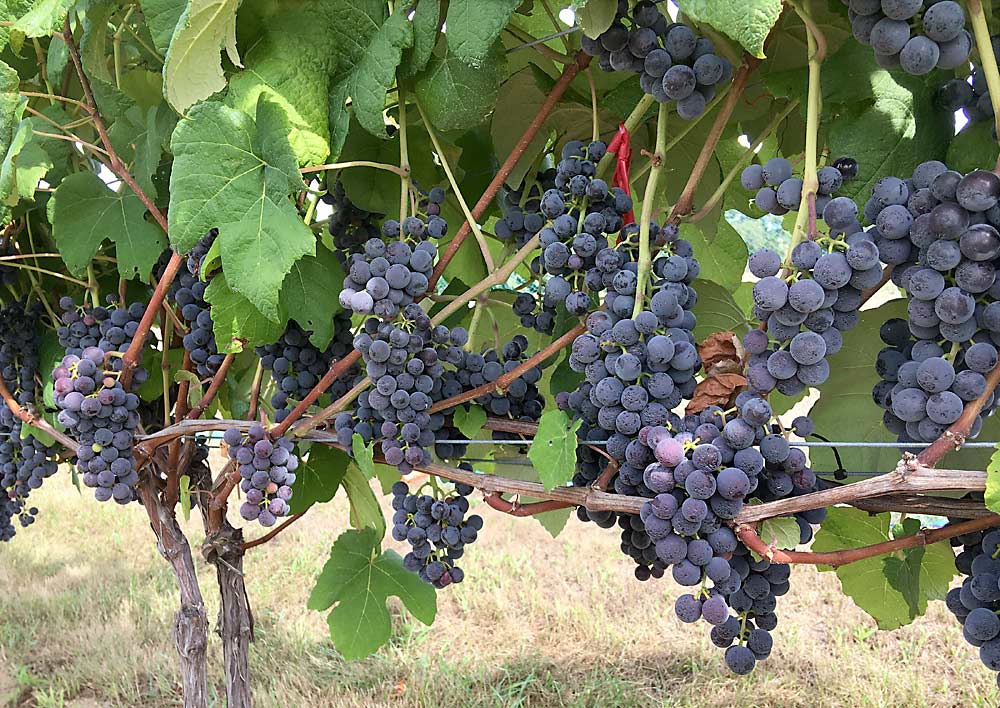
Seedless table grapes are a rare fruit crop in New England, but if growers plant the right cold-hardy varieties they can take advantage of a profitable local sales niche.
Two experimental plots in New Hampshire have proven the viability of certain table grape varieties. The efforts started more than a decade ago, when grower John Lastowka was looking for a new fruit crop to grow in southern New Hampshire — something he could sell to local farm stands for a nice return. University of New Hampshire extension field specialist George Hamilton suggested he try seedless table grapes.
To Hamilton, who grew up on a Pennsylvania Concord vineyard, seedless table grapes seemed like a no-brainer, and he wanted to show New England growers that cold-hardy varieties could thrive in their region.
Hamilton, who recently retired from UNH, helped Lastowka get a grant from Northeast Sustainable Agriculture Research and Education in 2010 to help pay for the project. Lastowka planted 16 varieties of cold-hardy seedless table grapes that year, and he planted more the next year. He now has half an acre.
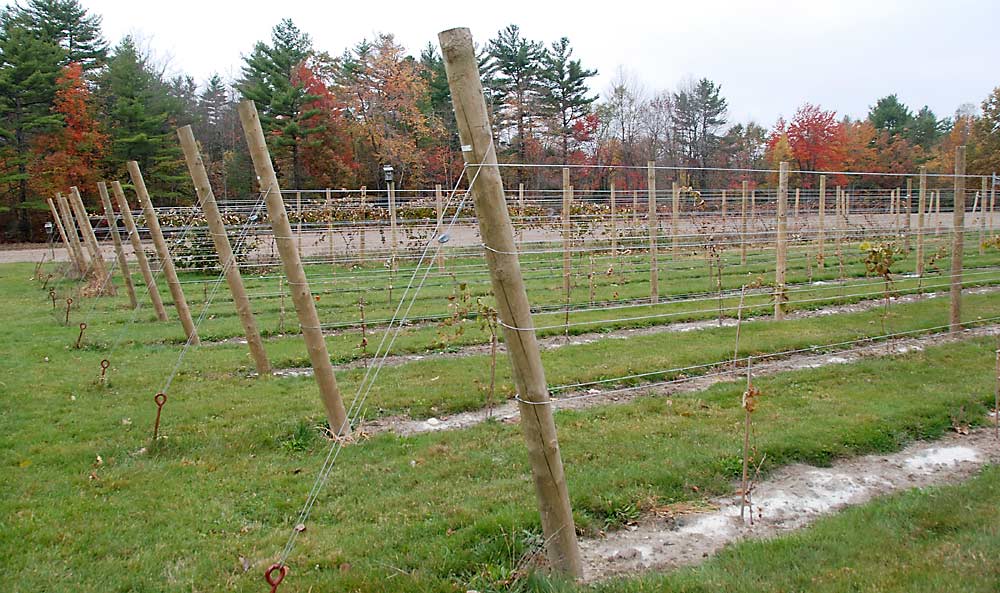
Lastowka said local consumers love his seedless table grapes, and the farm stands he sells to buy all the grapes he can grow. He gets more money per pound from his table grapes than from his wine grapes.
Hamilton said the up-front costs — vines, trellises and bird netting are the big ones — are high, and the grapes need to be picked at a busy time of year for the region’s fruit and vegetable farms (late August through mid-September or so), but their profit potential makes up for the downsides.
New Hampshire Agricultural Experiment Station researcher Becky Sideman decided to build on the work of Hamilton and Lastowka by planting seedless table grapes at the UNH Woodman Horticultural Research Farm in 2015. Sideman planted eight grape varieties on two training systems: vertical shoot position (VSP) and Munson — a system well suited for vigorous trailing varieties, with shoots combed over four wires strung 5 or 6 feet aboveground.
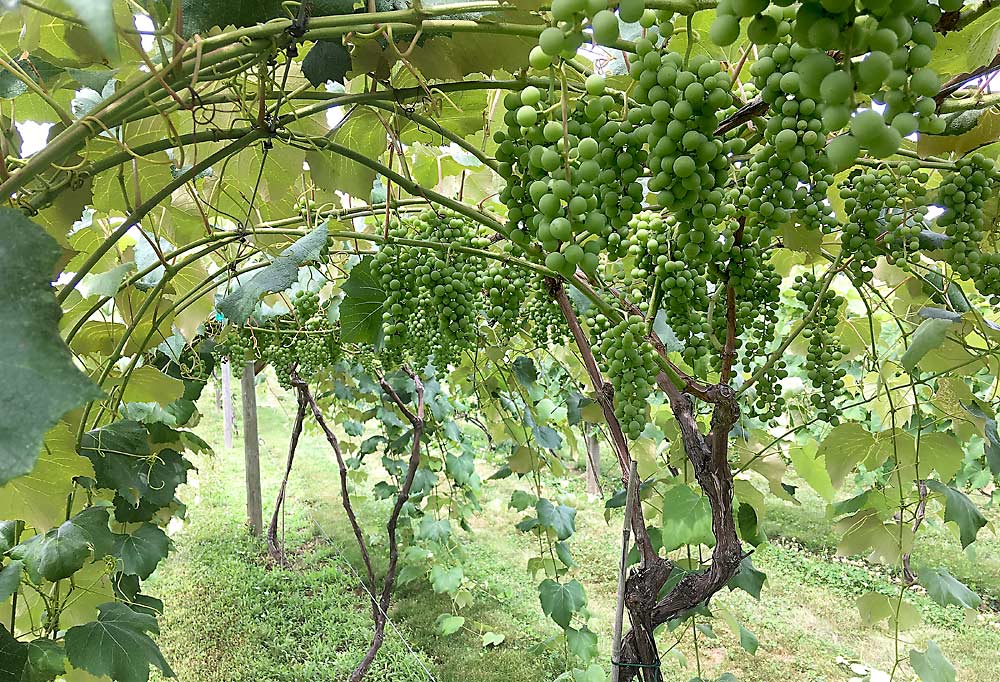
A $30,000 Specialty Crop Block Grant helped pay for the trellises, bird netting and other expenses. She recently expanded the planting with eight additional cold-hardy varieties, including: Compassion, Joy, Faith, Somerset, Everest, Gratitude and Hope.
Of the two training systems in Sideman’s plot, Munson has achieved higher yields and better fruit quality so far. But Munson requires a lot of overhead work, which can be exhausting, she said, “especially if you’re short.”
If a grower is already training wine grapes on VSP, it might be more convenient to just stick with that system for seedless table grapes, Hamilton said. Lastowka said he uses VSP because it’s easy to manage: The grapes are waist-high when picking, for example.
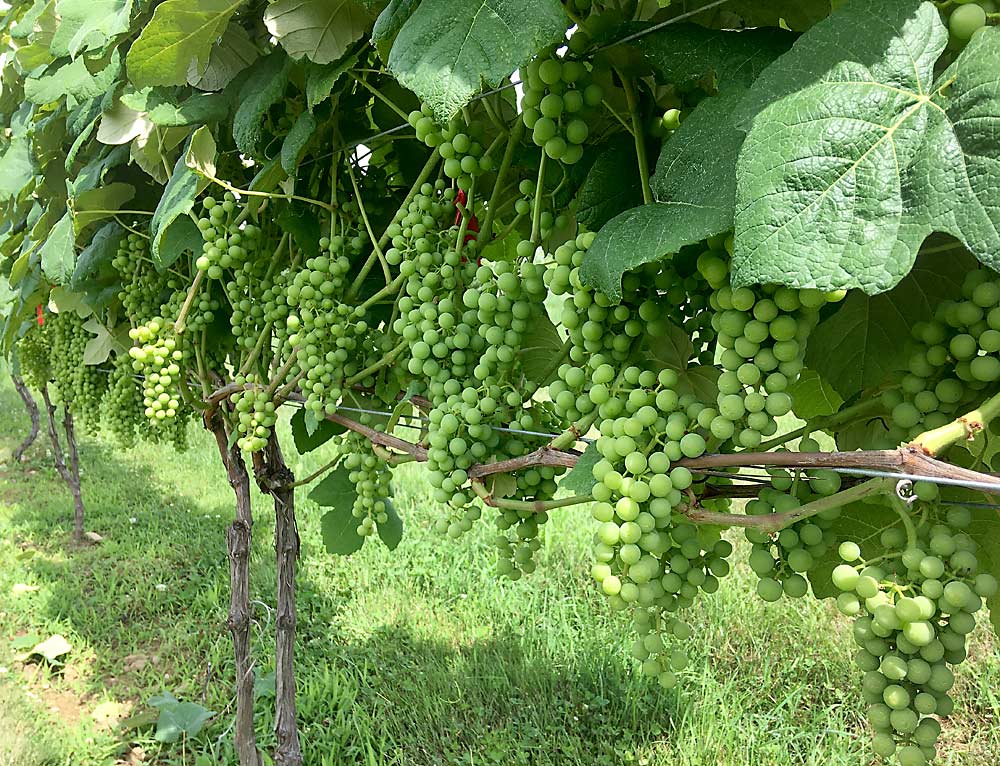
Sideman said her top performer so far is Mars, a productive purple variety that has good flavor and is relatively disease-resistant. Another good variety is Canadice, a red grape. Varieties such as Vanessa and Lakemont have excellent fruit quality but need more intensive disease management, she said.
Lastowka also recommends Mars, as well as another large purple grape, Venus, and a red grape, Reliance. He also had good luck with Thomcord, a cross of Thompson and Concord, but that grape might not work for everyone. (Sideman couldn’t get Thomcord to survive in the UNH plot.) Customers also like Somerset, a sweet grape that’s hard to grow because it has a short picking window and thin skin, which makes it popular with yellow jackets, hornets and bees looking for sugar.
“It’s a nice grape, but tough to get to market,” Lastowka said.
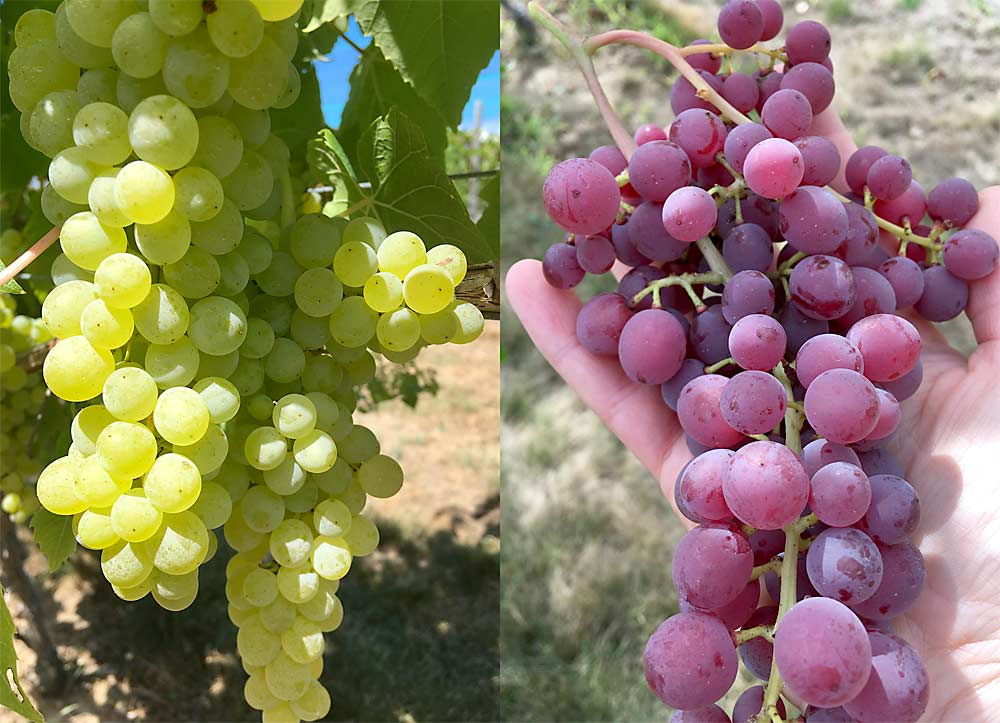
Mars, Venus and Thomcord yield Lastowka 30–40 pounds per vine (compared to 20–25 pounds for other varieties). They have big, well-formed clusters that hang a long time without falling off the stem. Their skins are a little thicker, too, so insects can’t get at them. They stay sweet and keep well in the refrigerator, he said.
In a normal year, Lastowka will pick 1.5–2 tons of seedless table grapes from his half-acre plot. He delivers most of them to area farm stands, but he also has some U-pick customers. He hosts tours of the plot and said customers enjoy learning about the varieties as much as picking them.
Lastowka said the picking window for each seedless table grape variety lasts about a week and a half to two weeks. Birds love them, so he has to cover them with netting. He hangs the netting on the third-highest wire of his four-wire VSP system, about a third of the way through the season, then rolls up the netting in winter and stores it right on the wire.
—by Matt Milkovich

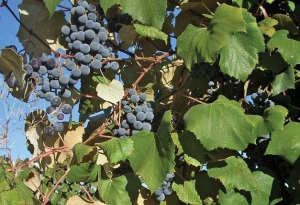





Leave A Comment